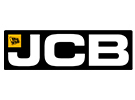Navigating the Future: Key Trends, Challenges, and Leadership Imperatives for UK Manufacturing in 2025
The UK manufacturing sector in 2025 presents a complex and dynamic environment, characterised by a delicate balance of nascent recovery and persistent underlying challenges. While recent data indicates a notable improvement in output and a cautious rise in confidence, the sector continues to grapple with soft domestic demand, declining investment, and escalating operational costs.1 This intricate landscape necessitates a new paradigm of leadership, one defined by agility, foresight, and a deep understanding of interconnected global and domestic forces.
Success in this evolving industrial era hinges on the ability of leaders to champion comprehensive digital transformation, foster a culture of continuous innovation, build robust and resilient supply chains, and strategically address the deepening skills deficit.1 The current climate suggests that a forward-looking perspective, rather than immediate market signals, is driving optimism, underscoring the need for leaders capable of translating abstract future hopes into tangible strategic actions and internal resilience.
For Kaizen, these dynamics translate into a clear mandate: identify and cultivate leaders who are not only technically proficient in advanced manufacturing technologies but also possess exceptional change management capabilities, strategic acumen, and a people-centric approach. Such leaders are crucial for driving sustainable growth and ensuring the sector's global competitiveness amidst a rapidly transforming industrial landscape.6
The UK Manufacturing Landscape in 2025: A Dual Narrative of Recovery and Resilience
The UK manufacturing sector is currently navigating a period of significant transition, marked by both encouraging signs of recovery and enduring structural challenges. The overall picture is one of cautious optimism, tempered by an awareness of the complexities that lie ahead.
Current Performance & Outlook
Recent reports indicate a nuanced recovery within the sector. The output balance has shown a sharp improvement, rising to +9% from -1% in the previous quarter, signaling a tangible acceleration in production activities.1 This positive shift in production volume is a vital indicator of the sector's inherent capacity to rebound from previous downturns.
However, this improved output does not yet fully translate into robust demand. Total order books remain in negative territory at -2%, a figure largely influenced by persistent weak domestic demand.1 This situation highlights an ongoing challenge: converting increased production capacity into strong sales within the UK market. Conversely, export orders offer a more promising outlook, having climbed to +7% from a mere +1% in the preceding quarter.1 This upward trajectory in international demand provides a crucial lifeline for manufacturers, underscoring the increasing importance of global markets in driving sector growth amidst prevailing trade uncertainties.
Despite these mixed signals, confidence among manufacturers has registered a slight increase, moving from 6.8 to 7.1.1 This rise in sentiment appears to be primarily buoyed by future expectations, particularly around prospective trade deals and the anticipated stabilization of input costs, rather than reflecting current robust performance.1 This forward-looking optimism suggests a deep-seated belief in the sector's long-term potential, even as it contends with immediate operational and market hurdles.
A significant and persistent concern for the sector is the ongoing decline in investment intentions.1 This trend is particularly troubling given that UK manufacturing has historically underinvested compared to its international counterparts.1 A continued reluctance to invest could impede future productivity gains, hinder the adoption of advanced technologies, and ultimately compromise the sector's ability to compete effectively on a global scale.
The observed rise in confidence, despite weak domestic demand and declining investment, reveals a compelling paradox: a sector buoyed by future hope rather than present performance. This indicates that the prevailing sentiment among manufacturing leaders is heavily influenced by external, future-oriented factors, such as anticipated government policies or shifts in the global economic landscape. For executive leadership, this dynamic implies a heightened requirement for strategic foresight and sophisticated scenario planning. Leaders must possess the resilience and determination to commit to long-term investment and strategic initiatives, even when immediate market indicators appear unfavorable. Their capacity to translate abstract "hope" into concrete strategic actions and to cultivate internal organizational resilience will be paramount for sustained success.
Subsector Variations and Forecasts
The aggregated data for UK manufacturing, while providing a general overview, masks considerable variations in performance and outlook across individual subsectors. This granular divergence underscores the diverse realities within the broader manufacturing landscape.
For instance, the Food & Drink sector, which stands as the UK's largest manufacturing subsector, accounting for 18.7% of Gross Value Added (GVA), forecasts positive output growth of +1.6% in 2025.1 However, this growth is projected to occur alongside an anticipated decline in employment, with forecasts of -2.8% in 2025 and -1.8% in 2026.1 This trend explicitly highlights that automation and efficiency gains will be critical drivers as headcounts diminish, indicating a strategic shift towards technology-driven productivity.
Similarly, the Non-Metallic Minerals sector anticipates robust output growth of +3.4% in 2025, accompanied by a modest employment increase of +1.3%.1 The Rubber & Plastics sector also projects output recovery at +2.2% in 2025, yet it expects a significant employment contraction of -5.5% in the same year, signaling a pronounced focus on labor productivity through technological adoption.1
Conversely, other subsectors face considerably more challenging forecasts. Electronics is projected to experience declines in both output (-0.5%) and employment (-6.6%) in 2025, representing the most significant employment contraction across all subsectors.1 The Basic Metals sector faces the sharpest overall contraction, with forecasted output declines of -9.5% in 2025 and -11.3% in 2026, alongside employment reductions of -5.5% and -3.4% respectively, as it continues to struggle under global cost and trade pressures.1 The Motor Vehicles (Automotive) sector also anticipates a substantial output decline of -7.1% in 2025.1
This detailed subsector analysis reveals that a uniform leadership strategy is insufficient for the multifaceted UK manufacturing landscape. The disparate trajectories mean that executive leaders must possess a deep, granular understanding of their specific subsector's unique market dynamics, competitive pressures, and evolving workforce requirements. For executive recruitment, this implies a strategic focus on identifying candidates with proven experience and a track record of success within particular manufacturing verticals. Alternatively, leaders demonstrating exceptional adaptability and the capacity for strategic re-orientation across diverse industrial contexts will be highly valued. Furthermore, these employment forecasts directly inform where demand for specific technical skills and change management expertise will be most acute.
Table: UK Manufacturing Subsector Output & Employment Forecasts (2025-2026)
|
Subsector
|
2025 Output (%)
|
2025 Employment (%)
|
2026 Output (%)
|
2026 Employment (%)
|
|
Overall Sector
|
-0.2
|
+4.4
|
+0.7
|
-1.4
|
|
Food & Drink
|
+1.6
|
-2.8
|
-
|
-1.8
|
|
Non-Metallic Minerals
|
+3.4
|
+1.3
|
+2.2
|
+1.2
|
|
Rubber & Plastics
|
+2.2
|
-5.5
|
-0.3
|
+0.1
|
|
Other Transport
|
-0.2
|
+4.4
|
+0.7
|
-1.4
|
|
Electronics
|
-0.5
|
-6.6
|
-0.4
|
-0.8
|
|
Basic Metals
|
-9.5
|
-5.5
|
-11.3
|
-3.4
|
|
Motor Vehicles
|
-7.1
|
-1.4
|
-1.1
|
+0.4
|
|
Mechanical Equipment
|
-0.5
|
-5.0
|
+0.2
|
-2.7
|
|
Electrical Equipment
|
-1.9
|
-6.3
|
+1.6
|
+3.8
|
|
Paper & Printing
|
-3.4
|
-4.2
|
-1.7
|
-4.1
|
|
Pharmaceuticals
|
-1.6
|
-2.0
|
-0.6
|
+0.8
|
|
Chemicals
|
-0.1
|
-4.8
|
-0.1
|
-0.6
|
Source: 1
Key Challenges Shaping the Sector
The UK manufacturing sector faces a confluence of significant challenges that necessitate strategic leadership and adaptive responses. These challenges span economic, geopolitical, supply chain, workforce, technological, and environmental domains, often interacting to create a complex operating environment.
Economic Headwinds & Geopolitical Uncertainty
UK manufacturers continue to operate under considerable financial strain. Data from Make UK highlights that a substantial 70% of manufacturers experienced cost increases of up to 20% over the past year, with a concerning 8% reporting increases as high as 50%.2 A staggering 92% of manufacturers identify employment costs as their primary financial risk for 2025, largely attributed to the ramifications of the Autumn Budget's changes to taxation and employment policies.5 Furthermore, energy and material prices persist as significant challenges, contributing to what some describe as a "perfect storm" of rising overheads and unpredictable global markets.2
Compounding these domestic financial pressures is the looming threat of geopolitical uncertainty, particularly the potential re-election of Donald Trump and his pledged 10% tariff on all US imports.2 Economists express concern that such protectionist policies could reignite global inflation, thereby increasing the cost of goods worldwide and tightening supply chains. While UK automotive exports might avoid direct tariffs, a broader slowdown in global trade, often termed 'slobalisation,' poses a significant risk of deterring investment and increasing costs for UK suppliers heavily reliant on international components.2
The interplay between these economic and geopolitical forces is particularly critical. The potential imposition of US tariffs could directly reignite inflationary pressures, which would, in turn, further exacerbate the already high operational costs faced by UK manufacturers. This creates a reinforcing negative feedback loop, rendering the financial landscape even more precarious. To navigate this complex and interconnected threat landscape, leaders require sophisticated risk management capabilities, robust strategic financial planning, and the agility to rapidly adapt supply chains and pricing strategies in response to global trade shifts. Executive roles with a strong focus on risk management, international trade, and strategic finance are thus becoming increasingly vital.
Supply Chain Vulnerabilities
The resilience of global supply chains remains a paramount concern for UK manufacturing. Residual inefficiencies stemming from the COVID-19 pandemic, coupled with ongoing geopolitical unrest and the transformative impact of Brexit, have starkly illuminated the inherent fragility of global dependencies.2 These disruptions have catalyzed a significant push towards reshoring and nearshoring initiatives. A notable 58% of UK manufacturers are already bringing production closer to home, with 90% reporting tangible benefits such as enhanced supply chain resilience and improved cost efficiency.2
Adding another layer of complexity are evolving regulatory frameworks, such as the EU’s General Product Safety Regulation (GPSR), which recently came into force. This regulation introduces stricter requirements for product safety, traceability, and documentation.2 For UK manufacturers serving EU customers, compliance necessitates appointing a designated "responsible person" within the EU or, in some cases, relocating aspects of their operations, imposing considerable financial and operational pressure.2
In response to these vulnerabilities, advanced technologies like Artificial Intelligence (AI), Machine Learning (ML), and Blockchain are increasingly viewed as indispensable tools for enhancing supply chain transparency, predicting disruptions, and optimizing operations.10 However, the integration of these complex technologies into existing, often legacy, systems presents its own set of challenges, including substantial initial investment, the need for extensive training, and critical concerns around cybersecurity and data privacy.10
The shift in focus for supply chain management has moved beyond mere efficiency to prioritize strategic resilience and compliance. The EU GPSR serves as a tangible example of a regulatory hurdle that directly impacts market access and necessitates structural changes within manufacturing operations. The accelerating drive for localization is a direct strategic response, addressing both the need for greater resilience and the pressure to manage rising costs. This dynamic necessitates that leaders are adept at strategic supply chain re-engineering, rather than simply optimization. This includes a comprehensive understanding of international regulations, the capacity to implement and leverage digital supply chain technologies for enhanced traceability and predictive analytics, and the foresight to make significant investment decisions in reshoring or nearshoring initiatives. Consequently, roles such as Chief Supply Chain Officer or Head of Global Operations, with a strong emphasis on digital capabilities and regulatory compliance, are experiencing heightened demand.
The Intensifying Skills Gap & Workforce Dynamics
The UK manufacturing sector is confronting a critical and deepening skills gap, a long-standing challenge that has been exacerbated by recent economic and social shifts. Research from Make UK indicates that a substantial 75% of manufacturing professionals identify the lack of appropriate skills as the single biggest barrier to growth.2 This translates into a concerning reality where 36% of all manufacturing vacancies prove hard-to-fill due to applicants lacking the necessary skills, qualifications, or experience.2 Alarmingly, approximately one in ten firms report taking longer than 12 months to fill a single vacancy, significantly impacting their ability to fulfill orders and plan for future growth and sustainability.6
This critical shortage is compounded by an aging workforce, with a growing proportion of employees nearing retirement age or opting for early retirement.6 This demographic shift results in a substantial loss of valuable institutional knowledge and exacerbates existing skill gaps, making effective knowledge transfer a top priority for organizations.7
Furthermore, the manufacturing sector continues to struggle with an outdated public image. It is often perceived as "dirty, sometimes dangerous," which makes it difficult to attract younger talent, particularly Gen Z, who typically prioritize flexibility, work-life balance, and meaningful work in their career choices.2 This perception challenge is compounded by the fact that 41% of Small and Medium-sized Enterprises (SMEs) reported losing apprentices to job or career changes before their training was even completed, often as these young workers sought better opportunities elsewhere.2
Adding to the complexity is the "Apprenticeship Levy conundrum." While the levy was introduced with the intention of addressing the growing skills gap, its implementation has yielded mixed outcomes, particularly for SMEs. A staggering £2.178 billion in unspent funds has been returned to the Treasury, highlighting significant inefficiencies, excessive bureaucracy, and a lack of accessibility for smaller businesses.2 This represents a systemic failure in a key policy mechanism designed to foster talent development within the industry.
The comprehensive nature of the skills crisis demands a holistic people strategy, extending far beyond traditional recruitment efforts. The evidence clearly indicates that the skills gap is not a simple supply-demand issue but a complex, multi-faceted systemic problem. Its roots lie in an aging workforce, a pervasive negative industry image, evolving youth expectations, and structural failures within policy mechanisms like the Apprenticeship Levy. This necessitates that leaders adopt a comprehensive, holistic approach to talent management. This includes proactive workforce planning, the implementation of robust internal training and upskilling programs, and a strong employer branding initiative aimed at fundamentally reshaping the industry's image to attract a new generation of talent. Moreover, leaders require strong social and emotional skills to effectively manage cultural change, foster employee engagement, and improve retention rates. Executive roles in human resources, talent development, and organizational culture are no longer purely administrative functions; they have become strategic imperatives for the sector's future viability.
Technological Adoption & Digital Transformation Barriers
Despite the clear and compelling benefits of adopting advanced technologies, UK manufacturers, particularly SMEs, exhibit a notable hesitation in their digital transformation journeys. Reports indicate that 68% of manufacturers found smart factory technologies made them more productive, and 51% reported increased agility.2 Yet, this hesitation often stems from deeply entrenched ways of working, uncertainty regarding the costs and complexities of implementation, and a perceived lack of internal digital expertise.2 There is a significant disparity in technology adoption rates between larger firms, which tend to lead, and SMEs, which often lag.2
Much of the progress seen to date has been characterized as "piecemeal." Many SMEs have adopted individual technologies to address specific, isolated problems, achieving quick wins but falling short of the comprehensive, transformational impact required for true productivity and global competitiveness.2 This fragmented approach contributes to the UK's significant lag behind global leaders in robotics density. The UK currently deploys only 101 robots per 10,000 workers, compared to Germany's 297 and China's 322.2
Furthermore, the increasing reliance on interconnected digital systems and the proliferation of industrial data introduce heightened cybersecurity risks, particularly concerning critical intellectual property (IP).4 This adds another layer of complexity and potential vulnerability to digital transformation efforts.
The most significant barriers to technological adoption are not primarily financial or technical, but rather cultural and strategic. The "fear of change, failure, and the unknown," alongside deeply ingrained operational methods, often outweighs the promise of increased productivity. This suggests a more profound, systemic challenge than merely providing access to technology or funding. Leaders must therefore act as proactive change agents, capable of fostering an organizational culture that embraces innovation, experimentation, and continuous learning. They need to articulate and implement integrated digital strategies that span the entire value chain, moving beyond isolated technology deployments. Crucially, addressing employee concerns about job security through transparent communication and robust upskilling and reskilling initiatives is paramount. Executive recruitment should prioritize candidates with a proven track record in driving large-scale organizational and cultural transformation, alongside a deep understanding of digital technologies and their strategic applications.
Decarbonisation Pressures
Sustainability is no longer a peripheral concern but a central pillar of the UK's industrial strategy. It is explicitly positioned as a cornerstone of the new government's "Invest 2035" Industrial Strategy, which specifically targets high-growth sectors such as advanced manufacturing and clean energy.3 This strategic alignment underscores the imperative for manufacturers to integrate environmental considerations into their core operations. Stricter UK and EU environmental regulations, including the growing demand for Sustainable Aviation Fuels (SAF) and broader net-zero goals, are creating significant compliance and competitive pressures for manufacturers, particularly in sectors like aerospace.4
Digital technologies are proving to be crucial enablers for facilitating sustainable practices and driving the transition to a circular economy. Additive Manufacturing (3D printing), for instance, allows for on-demand production, significantly reducing overproduction waste and enabling the direct recycling of materials into new products.12 Digital Twin technology helps manufacturers virtually represent physical assets, allowing them to track product lifecycles and plan for the reuse and recycling of materials at the end of their useful lives.12 Artificial Intelligence (AI) and Machine Learning (ML) can optimize production processes, improve supply chain efficiencies, and identify new recycling pathways for materials, with AI-driven systems capable of sorting materials in recycling plants with greater precision than traditional methods.12 Blockchain technology offers enhanced transparency and traceability in supply chains, crucial for monitoring the movement of recycled materials and verifying manufacturers' sustainability claims.12
Decarbonisation is not merely a cost or compliance burden; it is strategically integrated into national policy and actively driving innovation and the emergence of new business models. This indicates a "dual dividend" where environmental responsibility directly contributes to economic gain and competitive advantage. Examples include the development of capabilities for recycling rare earth materials through initiatives like the Driving the Electric Revolution Industrialisation Centres (DER-IC), which reduces reliance on imported materials.3 Similarly, advancements in lightweight materials and thermal management technologies improve product performance while reducing waste.3 Furthermore, emerging business models such as "Product-as-a-Service" and repair and remanufacturing are extending product lifespans and creating new revenue streams within a circular economy framework.12 Leaders must therefore view sustainability as a strategic opportunity for competitive advantage, market differentiation, and long-term value creation, rather than solely a regulatory hurdle. This requires expertise in green technologies, circular economy principles, and the ability to integrate Environmental, Social, and Governance (ESG) factors into core business strategy, from product design to supply chain management.
Strategic Opportunities for Growth and Innovation
Despite the formidable challenges, the UK manufacturing sector is poised to capitalize on several strategic opportunities that can drive substantial growth and foster innovation. These opportunities are largely centered around technological advancement, sustainability, and collaborative ecosystems.
Digitalisation, Automation, and AI
Digitalisation and automation are not just trends but fundamental accelerators for UK manufacturing, enabling companies to achieve more with fewer resources and empowering teams with enhanced data and streamlined processes.1 The impact of these technologies is quantifiable and significant. Initiatives like Made Smarter have demonstrated substantial benefits, including improved accuracy, dramatically reduced lead times (from four weeks to 48 hours in some instances), increased capacity and productivity, and even boosted sales while simultaneously reducing waste and carbon emissions.13 The Made Smarter program has shown an impressive return on investment, generating £8 for every £1 of government investment and contributing to the creation of 1,550 new jobs and the upskilling of 2,772 roles.13
Artificial Intelligence (AI) is proving to be a highly versatile tool, with its applications extending across various functions within manufacturing. AI is being leveraged to enhance component inspection, optimize B2B e-commerce platforms, support workforce development through generative AI (GenAI), and even revolutionize traditional manufacturing processes, as seen in the guitar-making industry.11 This broad applicability underscores AI's potential to drive efficiencies and innovation across the entire value chain.
The UK is actively fostering a supportive ecosystem to accelerate digital adoption. The Made Smarter Innovation programme, for instance, is investing a substantial £147 million to fast-track game-changing digital manufacturing ideas.15 This includes the establishment of Research Centres for early-stage innovation, Innovation Hubs (such as the Digital Supply Chain Innovation Hub) for testing and validating digital solutions, and Technology Accelerators dedicated to developing prototypes that address prevalent manufacturing challenges.15
Digitalisation is unequivocally the core enabler of future competitiveness for UK manufacturing. It is not merely an optional enhancement but the fundamental pathway to achieving enhanced productivity, resilience, and sustainable growth. The consistent evidence from various sources highlights digital technologies, particularly AI and automation, as central solutions to addressing a multitude of challenges, including managing cost pressures, mitigating skills shortages by empowering existing teams, and strengthening supply chain resilience. This drives a strong demand for leaders who are proactive digital champions, capable of articulating a clear, integrated digital strategy. Such leaders must oversee the comprehensive implementation of these technologies across all business functions and ensure that the workforce is adequately equipped and engaged to leverage these tools effectively.
Sustainability and Circular Economy
Sustainability is strategically positioned as a cornerstone of the new government's Industrial Strategy, "Invest 2035," which specifically targets high-growth sectors such as advanced manufacturing and clean energy.3 This strong governmental backing provides a clear strategic imperative and direction for the sector, ensuring that environmental considerations are integrated into core business planning rather than treated as an afterthought.
Beyond mere compliance, sustainability efforts are yielding tangible economic benefits and driving the adoption of innovative business models. Initiatives like the development of capabilities for recycling rare earth materials through the Driving the Electric Revolution Industrialisation Centres (DER-IC) are reducing reliance on imported materials, thereby enhancing resource security and cost efficiency.3 Similarly, advancements in lightweight materials and thermal management technologies are improving product performance while simultaneously reducing waste.3 Furthermore, the sector is witnessing the emergence of new business models, such as "Product-as-a-Service" and repair and remanufacturing, which extend product lifespans and create new revenue streams within a circular economy framework.12
The commitment to green manufacturing offers a "dual dividend," where environmental responsibility directly contributes to economic gain and competitive advantage. This strategic integration of sustainability into national policy and its active generation of economic benefits, such as reduced reliance on imported materials and enhanced resource efficiency through digital solutions, underscores its transformative potential. Leaders must therefore be visionaries who can embed sustainability into every facet of their operations, from initial product design and material sourcing to manufacturing processes and end-of-life management. This requires a unique blend of environmental expertise, strong business acumen, and innovative thinking to identify and capitalize on new revenue streams and cost savings derived from green practices, ultimately driving both ecological and economic value.
Collaboration and New Market Exploration
Collaboration is consistently identified as one of the UK manufacturing sector's greatest strengths. This collaborative spirit extends across the entire ecosystem, encompassing partnerships between Small and Medium-sized Enterprises (SMEs), larger organizations, universities, and government agencies, exemplified by initiatives such as the Driving the Electric Revolution Industrialisation Centres (DER-IC) and Made Smarter programmes.3 Such partnerships foster innovation, enable shared resource utilization (for example, providing SMEs with access to cutting-edge equipment on a hire basis), and accelerate vital research and development efforts.3
A significant majority of manufacturers, 63%, are proactively looking to explore new products in 2025.5 This strong drive for new product development signals a core growth strategy focused on market expansion and diversification through internal innovation and the broadening of product portfolios.
Beyond domestic innovation, there is a strategic emphasis on diversifying internationally and exploring new global ventures. Initiatives like the Global Incubator Programme, which provides opportunities for UK-based companies to expand into markets such as Canada, highlight the importance of international market exploration as a pathway to sustained growth.15
The emphasis on collaboration and new market exploration represents an "ecosystem thinking" approach for accelerated growth. These are not isolated opportunities but are mutually reinforcing elements. Collaboration within an innovation ecosystem, facilitated by platforms like Made Smarter hubs or DER-IC facilities, can significantly accelerate new product development, provide access to cutting-edge equipment, and de-risk market entry. This collective approach drives faster growth than individual efforts alone. Leaders must therefore be skilled networkers and strategists, capable of identifying, forging, and nurturing impactful partnerships across industry, academia, and government. They need to foster an "ecosystem mindset" within their organizations, promoting open innovation, knowledge sharing, and agile product development to rapidly capitalize on new market opportunities, both domestically and internationally. This also implies a need for leaders adept at managing complex stakeholder relationships.
Leadership Imperatives for 2025 and Beyond
The evolving landscape of UK manufacturing demands a new breed of leadership, characterized by a blend of technological acumen, strategic vision, and profound people-centric capabilities. Leaders must be prepared to drive transformative change across multiple dimensions to ensure the sector's resilience and competitiveness.
Driving Digital and People Transformation
Visionary digital leadership is paramount. Leaders must possess the strategic foresight to leverage advanced technologies such as AI, automation, and data not merely for incremental efficiency gains, but to fundamentally reshape business models, reimagine value propositions, and redefine customer expectations.9 This involves moving beyond mere "transformation" to actively driving "disruption," understanding how digital solutions can address complex business problems and cultivate a sustained competitive advantage.8
Successful digital transformation extends far beyond the mere adoption of technology; it necessitates profound changes in organizational structure, knowledge management, and cultural traits.17 Leaders must therefore be adept at change management, leading with empathy, influence, and adaptability. They need to effectively align diverse stakeholders around a shared vision and cultivate environments that encourage experimentation and learning from inevitable failures.9 Research suggests that a task-oriented leadership style can be particularly effective in the early stages of digital transformation, as it helps drive the necessary operational improvements and provides clear direction during periods of significant change.17
At its core, true digital leadership operates at the intersection of technology, business strategy, and people. Leaders must ensure that automation and AI empower teams with better data and smoother processes, rather than simply replacing human roles. This commitment to fostering a "people-centric organization" is crucial for successful technology integration and workforce engagement.1 The ultimate success of digital transformation hinges on the human element. The most significant barriers to adoption are often cultural, stemming from a fear of change or deeply entrenched ways of working. Without addressing this human dimension—managing employee concerns, ensuring comprehensive skills development, and fostering a receptive organizational culture—investments in technology will yield limited returns. Executive recruitment must therefore prioritize leaders with exceptional emotional intelligence, strong communication skills, and a proven ability to inspire, manage, and sustain organizational change. These leaders need to be adept at fostering a hybrid human-machine workforce, ensuring that technology adoption is seamlessly integrated with comprehensive workforce development and cultural transformation initiatives.
Talent Strategy and Workforce Development
Given the profound challenges posed by an aging workforce and persistent skills gaps, leaders must engage in proactive, data-driven workforce planning. This includes making strategic investments in comprehensive upskilling and reskilling initiatives to equip both current and future employees with the emerging capabilities required for smart factories and green technologies.6
To effectively attract and retain young talent, leaders must actively combat the manufacturing sector's outdated image. This involves building a strong employer brand that showcases manufacturing as a high-tech, exciting, and meaningful career path, one that offers clear growth opportunities, flexibility, and a positive work-life balance.2 Leveraging targeted social media campaigns, featuring authentic employee testimonials, and highlighting apprenticeship success stories can be crucial in dismantling negative stereotypes and presenting a more accurate, appealing image of the industry.2
The deepening skills crisis necessitates highly strategic human resources leadership. This includes the ability to navigate complex issues such as the inefficiencies of the Apprenticeship Levy, develop robust and accessible training programs, and implement non-financial benefits to enhance employee retention and satisfaction.2 The skills gap is not solely a problem of attracting new talent; it is critically about retaining both existing and newly recruited workers. Factors such as the desire for better work-life balance, perceived lack of training opportunities, and misconceptions about long-term career potential are significant drivers of attrition. This implies that a successful talent strategy must encompass the entire talent lifecycle, from initial attraction and onboarding to continuous development and long-term retention. Executive recruitment should actively seek leaders with a strong track record in comprehensive talent management, organizational development, and fostering a positive, growth-oriented workplace culture. Roles such as Chief People Officer or Head of Talent Strategy, with a specific focus on addressing manufacturing-specific challenges, will be highly valued for their ability to build and sustain a skilled and motivated workforce.
Building Resilience and Navigating Uncertainty
Leaders must develop robust, proactive strategies to mitigate a wide array of external risks. These include navigating geopolitical uncertainties, such as the potential for new tariffs, managing global supply chain disruptions, and responding effectively to economic volatility.2 This involves strategically strengthening domestic supply chains, diversifying international partnerships, and exploring new product niches to hedge against market fluctuations and reduce over-reliance on single markets or suppliers.4
In a fast-moving and often unpredictable global environment, leaders need to cultivate the capacity for agile decision-making. This means being able to act decisively and adapt rapidly to new information or unforeseen circumstances, even when perfect data or complete consensus is not immediately available.9 The ability to pivot quickly and effectively is a hallmark of resilient leadership.
Proactive engagement with policymakers, government bodies, and influential industry organizations, such as Make UK, is also crucial. Leaders must be adept at advocating for the sector's needs to shape a supportive regulatory environment, secure vital investment, and influence the direction of future industrial strategies.5 This external acumen is vital for creating a favorable operating landscape.
Navigating external uncertainties, such as geopolitical shifts and regulatory changes, requires strong external acumen, including strategic partnerships and policy advocacy. However, the ability to respond effectively to these external pressures depends heavily on internal organizational agility and rapid decision-making. These two aspects are mutually dependent; external awareness without the internal capacity for swift action is insufficient. Leaders must therefore be adept at both external scanning and internal organizational design for agility. They need to be skilled communicators and negotiators on the global stage, capable of influencing policy and forging strategic alliances, while simultaneously fostering a culture of rapid iteration, adaptability, and efficient resource allocation within their own organizations to respond effectively to unforeseen challenges.
Implications for Executive Recruitment in UK Manufacturing
The dynamic and challenging landscape of UK manufacturing in 2025 has profound implications for executive recruitment. The sector's need for transformative leadership translates into a clear demand for specific profiles and competencies that extend beyond traditional industry experience.
Identifying In-Demand Leadership Profiles
The evolving requirements point to an urgent demand for leaders who can effectively drive Digital Transformation. This includes roles such as Chief Digital Officers, Heads of Industry 4.0, or Chief Technology Officers with a strong operational focus. These individuals must possess deep AI and data fluency, a strategic understanding of automation, and the proven ability to integrate advanced technologies seamlessly across all operational functions to enhance productivity and competitive advantage.8
There is also a critical and growing need for Supply Chain Strategists and Resilience Leaders, encompassing roles like Chief Supply Chain Officers or VPs of Global Operations. These executives must be capable of navigating complex geopolitical risks, driving strategic localization initiatives, and leveraging digital tools for enhanced transparency and efficiency across the entire supply chain.2 Their expertise in de-risking and optimizing supply networks is paramount.
Chief Sustainability Officers or executive leaders with robust Environmental, Social, and Governance (ESG) credentials are becoming essential. Their mandate involves aligning organizational strategy with governmental sustainability initiatives, driving green innovation, and identifying new sustainable business models that create both environmental and economic value.3 This reflects the strategic shift towards sustainability as a driver of competitive advantage.
To address the systemic skills gap, People and Culture Leaders, such as Chief People Officers or Heads of Talent & Organizational Development, are crucial. Their responsibilities include fostering a positive employer brand, implementing effective internal training and upskilling programs, and managing significant workforce transformation through a people-centric approach.2 Their ability to attract, develop, and retain talent will directly impact organizational capacity and future growth.
Finally, leaders with strong Global Market Acumen and proven experience in new product development and international market diversification will be highly sought after. These executives are vital for capitalizing on growing export opportunities and exploring new international ventures, particularly in high-growth subsectors.5
Critical Soft Skills and Strategic Acumen
Beyond specific technical expertise, executive roles in UK manufacturing increasingly demand a sophisticated array of soft skills. Exceptional change management capabilities are vital, as leaders must guide their organizations through continuous technological, operational, and cultural shifts. The ability to lead with influence without authority across diverse internal teams and external partners is critical for fostering collaboration and achieving strategic objectives in complex ecosystems.9
Agile decision-making is paramount in fast-moving, uncertain environments. Leaders must possess the capacity to act decisively and adapt rapidly to new information or unforeseen circumstances, even when complete data or consensus is not available.9 A strong
strategic vision is also indispensable, enabling leaders to connect digital initiatives with core business goals, anticipate future opportunities, and drive long-term competitive advantage.9
Furthermore, robust social and emotional skills are increasingly vital for managing complex organizational change, fostering effective collaboration, building resilient teams, and improving talent retention in a challenging labor market.6 These interpersonal competencies are foundational for creating a positive and productive work environment that can navigate periods of intense transformation.
Conclusion
The UK manufacturing sector stands at a pivotal juncture in 2025, characterized by a complex interplay of nascent recovery, cautious optimism, and significant, interconnected challenges. While there is clear momentum in output and a strong drive for new products and exports, the sector grapples with persistently high operational costs, unpredictable geopolitical uncertainties, and a deepening, systemic skills crisis. The optimism observed among manufacturers is largely forward-looking, anchored in the hope of future trade deals and stabilizing input costs, rather than current robust domestic performance. This underscores the need for leadership that can translate future potential into present-day resilience and strategic action.
The path forward is unequivocally tied to strategic and integrated investment in digitalisation, automation, and AI, coupled with a profound and embedded commitment to sustainability and collaborative innovation. These are not merely technological or environmental shifts but fundamental transformations requiring a new paradigm of leadership that can navigate complexity and drive holistic change. The success of digital transformation, for instance, hinges as much on cultural adaptation and workforce development as it does on technological adoption. Similarly, sustainability is emerging not just as a regulatory burden but as a strategic opportunity for competitive advantage and new business models.
For Kaizen, this translates into a clear and urgent mandate: identify and place leaders who embody agility, determination, and a comprehensive skill set. This includes deep digital fluency, strategic foresight, exceptional change management capabilities, and a people-centric approach to talent development and retention. These are the leaders who will not only navigate the current complexities but also unlock the UK manufacturing sector's full potential for sustained growth and global competitiveness in the years to come.
Works cited
- UK Manufacturing Outlook Q2 2025 | FourJaw, accessed June 21, 2025, https://fourjaw.com/blog/uk-manufacturing-outlook-q2-2025-fourjaw
- UK Manufacturing 2025: 5 Key Challenges | B2B Marketing Outlook, accessed June 21, 2025, https://www.beachmarketing.co.uk/uk-manufacturing-challenges-2025/
- Manufacturing in 2025: the sector is poised for ... - The Manufacturer, accessed June 21, 2025, https://www.themanufacturer.com/articles/manufacturing-in-2025-innovation-and-drive-sees-the-sector-poised-for-growth/
- The Greatest Challenges Facing UK Aerospace Manufacturers in ..., accessed June 21, 2025, https://www.logisticssolutions.uk/the-greatest-challenges-facing-uk-aerospace-manufacturers-in-2025/
- 2025 industry outlook: UK manufacturing - Horizon Works, accessed June 21, 2025, https://horizonworks.co.uk/2025-industry-outlook-uk-manufacturing/
- The labour shortage challenge for UK manufacturers | Make UK, accessed June 21, 2025, https://www.makeuk.org/insights/blogs/the-labour-shortage-challenge-for-uk-manufacturers
- 5 Trends Driving the Manufacturing Skills Gap & What to do About ..., accessed June 21, 2025, https://www.faethm.ai/blog/5-trends-driving-the-manufacturing-skills-gap
- Digital Transformation Leadership | Online Course - Imperial College London, accessed June 21, 2025, https://www.imperial.ac.uk/business-school/executive-education/leadership/digital-transformation-leadership/online/
- Digital Leadership Skills Required For Transformation And Disruption - Forbes, accessed June 21, 2025, https://www.forbes.com/councils/forbestechcouncil/2025/06/03/digital-leadership-skills-required-for-transformation-and-disruption/
- Opportunities and challenges in tackling supply chain risk and resilience in the UK Aerospace Sector | Gowling WLG, accessed June 21, 2025, https://gowlingwlg.com/en/insights-resources/articles/2025/opportunities-and-challenges-in-tackling-supply-chain-risk-and-resilience-in-the-uk-aerospace-sector
- Manufacturing news, articles and insights, accessed June 21, 2025, https://www.themanufacturer.com/
- The circular economy and sustainable manufacturing - POST Parliament, accessed June 21, 2025, https://post.parliament.uk/the-circular-economy-and-sustainable-manufacturing/
- The impact of Made Smarter, accessed June 21, 2025, https://www.madesmarter.uk/resources/blog-the-impact-of-made-smarter/
- UK Manufacturing - The latest from UK Manufacturing, accessed June 21, 2025, https://uk-manufacturing-online.co.uk/
- Made Smarter: Innovation Network - Manufacturing - Innovate UK Business Connect, accessed June 21, 2025, https://iuk-business-connect.org.uk/programme/manufacturing-made-smarter/
- UK manufacturers are optimistic in 2025 says industry survey - Kelio, accessed June 21, 2025, https://www.kelio.co.uk/company/news/738-uk-manufacturers-are-optimistic-in-2025-says-industry-survey.html
- The role of leadership in digital transformation – a paradox way to improve operational performance | Emerald Insight, accessed June 21, 2025, https://www.emerald.com/insight/content/doi/10.1108/jmtm-07-2024-0386/full/html
Simon Owens, Director, Kaizen Talent Solutions simon@kaizen-ts.co.uk















